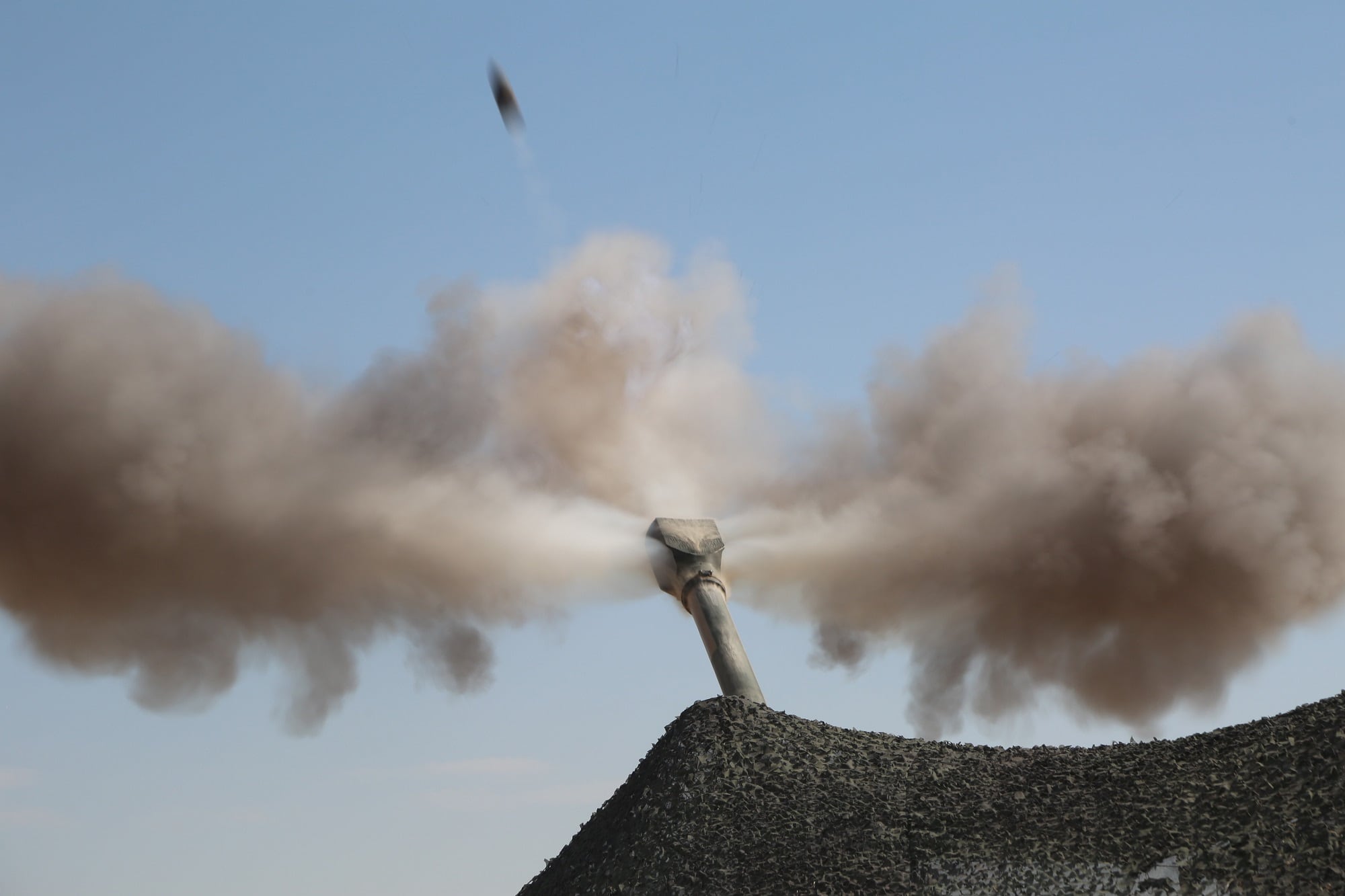Army researchers are developing upgrades that will allow 155 mm artillery rounds to travel farther, target smarter and do more damage when they hit, especially on armored vehicles.
Researchers with Program Executive Office-Ammunition launched a program last year known as Cannon-Delivered Area Effects Munition.
Manufacturing of the new rounds is expected to begin in 2020, but mid-term upgrades and off-the-shelf substitutes will happen as soon as next year.
According to an article authored by Peter Burke, PEO-Ammo’s deputy project manager for combat ammunition systems, and Tara Sarruda, chief engineer for Army Research, Development and Engineering Command, the aims of the program include:
- Using updated technology to improve artillery accuracy, especially in areas that have degraded or nonexistent GPS targeting.
- Adding range with advanced rocket-assisted projectiles.
- Increasing lethality while remaining in compliance with unexploded ordnance requirements to reduce civilian casualties and hazards after the battle.
To extend range, researchers with ARDEC are building a rocket-assisted projectile that can hit targets as far as 24 miles, extending the range of most artillery by at least six miles.
The Army has a 155 mm rocket-assisted projectile that can exceed 18 miles, but while the munition is in Army stockpiles, it is no longer in production, said PEO-Ammo spokeswoman Audra Calloway.
In the past decade, researchers have fielded the Excalibur projectile, a coordinate-seeking, high explosive round that uses onboard GPS to hit targets at extended ranges with an accuracy of less than 2 meters miss distance, according to the PEO-Ammo release.
They also more heavily utilized the Precision Guidance Kits, gear that turns conventional rounds into near-precision ammunition.
As the new rounds are developed, the Project Manager for Combat Ammunition Systems at Picatinny Arsenal, New Jersey, is accelerating the development of the XM1128 extended-range HE projectile and procuring certain advanced rounds and grenade-carrying rounds made by companies in Sweden and Israel.
The XM1128 is in final stages of development and has tested as more lethal at the 18-mile range.
The Swedish round, the BONUS SFM, is in production and has submunitions with advanced sensors that can search for armored vehicles as it flies, separate once detected, and fire an explosively-formed penetrator through the vehicle’s roof.
Other improved rounds include the PRAXIS, an upgraded conventional munition that fires four full-bore submunitions, each with tri-mode fuzing systems containing pre-formed tungsten fragments in the warhead.
Tri-mode fuzing is a three-mode detonation capability, which includes the ability to detonate at a prescribed distance from the ground or target, detonate when it strikes the ground or target, or after a preset time-delay.
Researchers are also developing Cluster Munition Replacement Technologies to continue to impact poorly located area targets from personnel to medium mechanized targets.
An advanced Dual-Purpose Improved Conventional Munition round, the DPICM XL, contains 60 submunitions, each with redundant fuzing systems that can strike personnel, light materiel and medium armored targets using an advanced warhead designed to penetrate the skin of an armored vehicle.
Scientists with the Office of Naval Research are also developing DPICM advancements, cargo projectiles that contain large numbers of submunitions but exceed the 99 percent compliance of the U.S. Unexploded Ordnance policy, according to Burke and Sarruda.
Todd South has written about crime, courts, government and the military for multiple publications since 2004 and was named a 2014 Pulitzer finalist for a co-written project on witness intimidation. Todd is a Marine veteran of the Iraq War.




